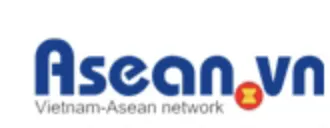Technology Support in Public Administration Innovation and Efficiency
Introduction
Technology support in public administration is becoming a key factor in improving the efficiency and transparency of government agencies. With the rapid development of information technology, digital solutions have been widely applied to enhance the quality of public services, increase transparency, and reduce processing time. Keywords such as “digital transformation” and “e-government” are not only trendy concepts but also tangible goals in state management.
Benefits of Technology in Public Administration
Enhancing Efficiency and Saving Time
One of the biggest benefits of technology in public administration is enhancing efficiency and saving time. Electronic information management systems, document management software, and process automation tools help minimize paperwork, optimize processing procedures, and shorten the time to complete tasks. For example, the application of an electronic document management system allows administrative agencies to easily access and process information, reducing the time spent on searching and storing documents.
Increasing Transparency and Public Disclosure
Technology also helps increase transparency and public disclosure in the activities of public administration agencies. Electronic portals, online lookup systems, and mobile applications provide citizens with detailed information about procedures, processes, and the status of their applications. This not only makes information more accessible to the public but also facilitates monitoring and feedback, contributing to a transparent and accountable public administration.
Promoting Citizen Participation
Technology enables active citizen participation in state management activities. Online platforms, citizen forums, and mobile applications allow citizens to easily provide feedback, express opinions, and contribute to government decision-making processes. This not only improves the quality of public services but also enhances public consensus and trust in government agencies.

The National Advisory Council helps ensure communication and cooperation among the nations broad emergency management team, said Administrator Fugate. These new members are experienced and dedicated public servants whose backgrounds in preparedness and emergency management make them valuable additions to the National Advisory Council. FEMA/Terry Monrad
Challenges in Technology Application
Despite numerous benefits, the application of technology in public administration faces several challenges. One of the main issues is ensuring information security and protecting personal data. With the increase in cyber-attacks and security threats, protecting personal information and sensitive data of citizens is crucial.
Secondly, deploying new technology requires significant financial and human resources. Public administration agencies need to invest in technology infrastructure, train staff, and develop new operating procedures. This requires commitment and close coordination between government levels and related parties.
The Future of Technology in Public Administration
In the future, technology is expected to continue playing a crucial role in innovating and enhancing the quality of public administration. New technologies such as artificial intelligence (AI), blockchain, and the Internet of Things (IoT) promise to bring many opportunities and challenges. AI can be used to analyze big data, predict trends, and optimize management processes. Blockchain can enhance transparency and information security, while IoT can improve monitoring and management capabilities of public services.
Conclusion
Technology support in public administration is not only a trend but also an important factor in enhancing efficiency, transparency, and citizen participation. Despite facing many challenges, the application of technology in public administration promises to bring practical benefits and contribute to the sustainable development of society. With the commitment and effort of government agencies, technology will continue to drive innovation and improve the quality of public services in the future.

